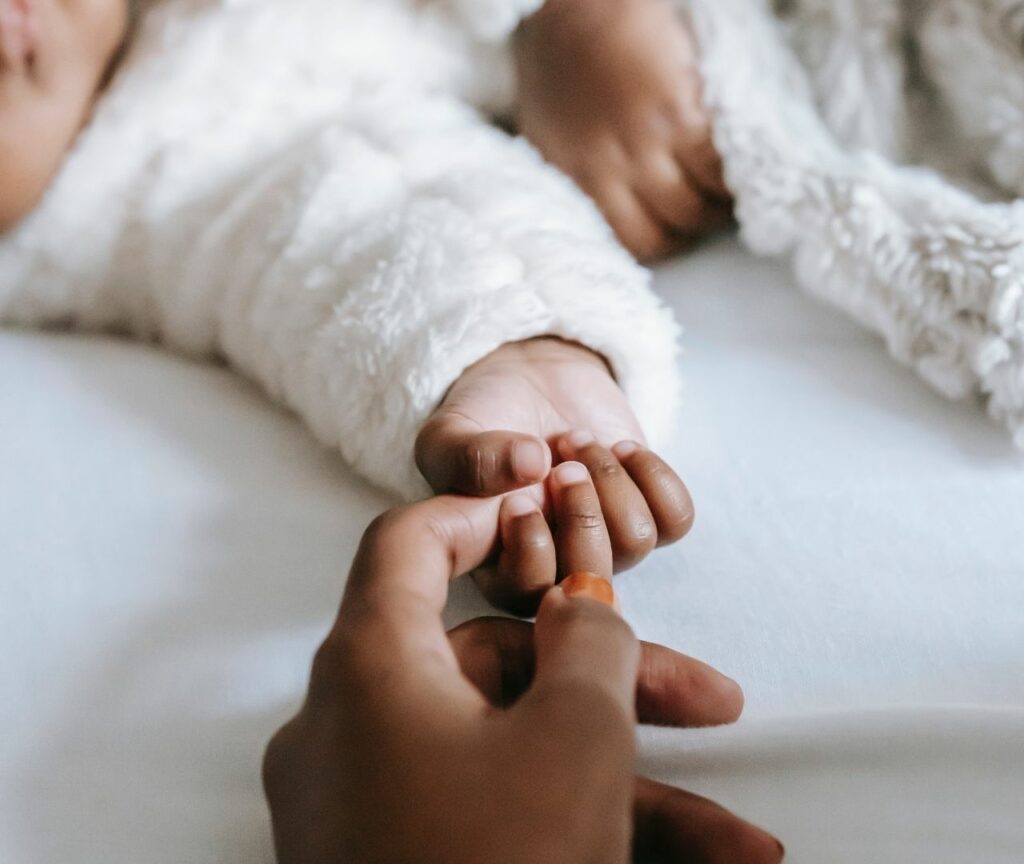The post Dr. Barry Bogin: “Orphanages everywhere in the world should be disbanded” appeared first on Hope and Homes for Children.
]]>Dr. Barry Bogin is a physical anthropologist based at Loughborough University in the UK.
Known for his pioneering work on the growth of Guatemalan Maya children, Dr. Barry Bogin’s research has led to him to a clear and resounding conclusion. Children need the love and care of family to thrive. Never orphanages.
In this feature, Dr. Bogin describes how his ground-breaking work has led him to understand the importance of love, the harm of stress, and why every child around the world should be brought back to family.
Read the full two-part interview here.

Hope and Homes for Children
A home truth
A professor, a writer and a father of three, Dr. Bogin has long known the importance of family. He’s also seen the harm of orphanages first-hand.
“My youngest was in an institution in China,” says Dr. Bogin. “I’m fully aware of how brutal it all is.”
After bringing his daughter back to family, Dr. Bogin saw how her time in the orphanage impacted her. “It wasn’t just physical growth, it was development. She wasn’t walking when we got her. She was about three, four months behind.” Quickly, he understood why. Stress.
Stress and child development
Years of research into child development has shown Dr. Bogin the harmful impacts of stress. First observed in his studies in Guatemalan Maya communities, Dr. Bogin has rigorously documented how stress drastically impacts children’s development.
“Children who suffer chronic toxic stress have both physical and emotional and cognitive impairments,” explains Dr. Bogin. “Stress hormones are antagonistic to growth hormones, the relationship’s very clear.”
Orphanages reflect the same conditions. Exposed to violence, abuse and neglect, children grow up experiencing profound stress and lack of safety. As a result, for every three months spent in an orphanage, children lost one month’s growth.

Yevhenii Zavhorodnii / Hope and Homes for Children
“Children in orphanages are stunted,” explains Dr. Bogin. “As soon as they get out of the orphanage, one of the first things that social workers know is that you’ve got to find new clothes, because they grow.”
“Probably the best examples of this are a British study of British adoptees from the Romanian orphanages during the Ceausescu regime, when so many kids were tied in their cots, totally neglected,” he says. “The earlier those kids were adopted into families, the better they do, but all of them show residual effects as adults. These orphans were not just a bit neglected. They were severely deprived.”
Where love is present
For Dr. Bogin, the harm of orphanages stems back to a key flaw in their design. They house and feed children, but that’s it. Orphanages can’t offer family love. But that’s the thing children need more than anything.
“There’s a very famous study done by a British nutritionist, Professor Elsie Widdowson, who went to orphanages in Germany after World War II,” explains Dr. Barry Bogin. “They had lots of kids in orphanages and they experimented: they gave some kids an extra biscuit, an extra orange, and they gave other kids just the normal fare.”
The researchers expected to see how extra nutrition boosted growth. Instead, the opposite was true. The children receiving extra food grew less. The scientists couldn’t understand why. Until they changed focus to the care the children received. They quickly saw the truth.

Hope and Homes for Children
“The matron (working at the orphanage) beat the children. She punished the children at dinner time before they could eat. Well, you know what that does to every kid sitting in the dining room. There’s no digestion. There’s no absorption. And that’s why the interventions didn’t work.”
Professor Widdowson’s test proved that subsistence isn’t enough for children to grow. They need family love to thrive.
“She quotes a passage from the Old Testament: ’Better is a dinner of vegetables and herbs where love is present than a fattened ox served with hatred.’“
Dr. Barry Bogin
Bringing children Back to Family
When we bring children from orphangaes back to family, the positive changes are evident.
“In kids under five, and maybe even up to nine or so, the effect is almost immediate; a month, perhaps six weeks,” says Dr Bogin. “The power of love works very quickly.”
Finally receiving individualised love and care, children get the chance to flourish. Their stress and anxiety are reduced, allowing their bodies to focus on what they’re supposed to. Growing.
“In rich countries, the old-style orphanages don’t exist. Kids are placed with families. It is super well known that placing them in the old-style orphanages is bad. So orphanages everywhere in the world should be disbanded.”
And that’s exactly what Dr. Barry Bogin is calling for. For every orphanage to be closed, and for every child living inside to be brought safely back to family.

Hope and Homes for Children
Find out more about our work
If you want to learn more about our life-saving work bringing children back to family, head to our How We Work page.
If you’d like to stay up-to-date with even more exciting feature articles, updates and opportunities for engagement, sign up to our Mailing List.
Join the mailing list
The post Dr. Barry Bogin: “Orphanages everywhere in the world should be disbanded” appeared first on Hope and Homes for Children.
]]>The post Children’s development without the stress of orphanages appeared first on Hope and Homes for Children.
]]>In part 1, professor Bogin talked to us about his work in Guatemala, measuring the effects of toxic stress on young Maya children’s development. In the second part of his interview, he discusses the importance of one to one care for children’s development, and his own hopes for an end to orphanage use worldwide
(AW) We often point out that over 100 years of evidence shows orphanages harm children. What did you find when you looked at records spanning over 300 years on children in orphanages, children’s homes and institutions?
(BB) That was actually a study published in the Journal of Physiological Anthropology. I cite the German paediatrician Piper, who did the survey in the 1950s. He showed that, starting in the 1700s, more than 90 to 100% of all the kids in the institutions died.
So in 1955, they knew this.
Even further back, I cite research on every baby under two years of age that went into the New York City Foundling Home. Some were abandoned, some were given up. That was in the 1920s, when these paediatricians (Dr. Chapin, Bakwin, and then in 1945 Dr. Spitz) wrote the most powerful indictment of these kinds of places. Spitz coined the name ‘hospitalism’ for the syndrome that these kids under two years of age suffered.
They were given food, their nappies were changed, but this picture shows the nurses. It looks like it’s COVID times. I mean, the nurses are in full gowns. The only skin showing is a little bit of their forehead and their arms. Their mouths are covered with masks. It wasn’t because the nurses did not care, they were not bad people, but rather they believed that covering up was good for sanitation.
But, they could not engage with the infants. So almost all of them died. That’s because they had really no love. Other photographs from around the same time, staged photographs showing the kids are all in wonderful starched clothing and they have little toys, but there’s only one, severe matron in the picture. That one woman could not provide the love and care that the many orphans needed.

Evidence from Europe
And then there is a very famous study done by a British nutritionist, Professor Elsie Widdowson, who went to orphanages in Germany after World War II, in the British controlled territory. The [science of] nutrition was in its infancy after the war, but there was a lot of interest in it because of all the hunger during and after the war, all the food rationing etc. They had lots of kids in orphanages and they experimented: they gave some kids an extra biscuit, an extra orange, and they gave other kids just the normal fare.
And it turned out after six months, the kids with the extra biscuits and the orange didn’t grow, but the kids who were getting regular orphanage food were actually growing better. Prof Widdowson said “this can’t be right!”. So she switched orphanages. She thought, well, maybe we did something wrong. So she gave the other kids who were growing well, the extra orange and extra biscuits, fortified with various nutrients. And lo and behold, at the end of the six months, again, the ones who were getting the intervention didn’t grow.
Better a meal served with love
But she found out what happened.
The matron, who had been at the orphanage, delivering the intervention in the beginning, had changed orphanages. This matron beat the children. She punished the children at dinner time before they could eat. Well, you know what that does to every kid sitting in the dinner room. There’s no digestion. There’s no absorption. And that’s why the interventions didn’t work.
And she quotes a passage from the Old Testament that “Better is a dinner of vegetables and herbs where love is present than a fattened ox served with hatred.”
So all this stuff has been known. I’m not coming up with something really new, but you’d be surprised how many places have run the story of the press release from Loughborough University. And I was interviewed by a couple of newspapers and BBC, Leicester radio….it’s like people have forgotten.
I forgot. I knew this stuff and I forgot it.
Resetting the clock on severe deprivation
(AW) So how might an orphanage, or any setting where there’s an absence of one-to-one love and care, affect a child’s emotional development as well as their physical development?
(BB) Well, kids who suffer chronic toxic stress have both physical and emotional and cognitive impairments. This is well known. Probably the best examples of this are a British study of British adoptees from the Romanian orphanages during the Ceausescu regime when so many kids were tied in their cots, totally neglected.
The earlier those kids were adopted into families, the better they do, but all of them show residual effects as adults. They have lower cognitive performance, they have physical growth deficiency, they’re small. They’re not stunted, but when you look at them as a group, they’re shorter. And they have various kinds of cognitive impairments.
Of course, these Romanian orphans were not just a bit neglected. They were severely deprived.
So that’s what happens in severe deprivation and with less than severe deprivation, you get less severe impairments. But you get them.
The end of orphanages
(AW) Do you believe from your findings that orphanages should no longer be used globally?
(BB) Absolutely. This is also very well known. In rich countries, the old style orphanages like the New York city facility don’t exist. So kids are placed with families. It is super well known that placing them in the old-style orphanages is bad. So orphanages everywhere in the world should be disbanded.
I have three children. My youngest was in an institution in China. I’m fully aware of how brutal it all is.
China has given up, of course, on these [intercountry] adoptions. They say it’s because they’ve changed their one child only policy. That’s part of it. The other part of it is they realize how brutal the institutional system is. When we got our daughter, she was 14 months old, and she was on the 30th percentile for length. So, she was shorter than 70 percent of kids her age. Now she’s about at the 50th percentile – average height. So she also had her immediate growth spurt after being adopted.
It wasn’t just physical growth, it was development. She wasn’t walking when we got her. She was about three, four months behind. But the Chinese basically put up for adoption girls they knew were going to be healthy. They often put the less healthy girls in the dying rooms at the orphanages. So once the directors of the orphanages sorted the girls out the ones that they didn’t think were worthy were just put into a room with doors closed. They just died of hunger and dehydration.
Fortunately, that’s [no longer] done in China, but I’m sure that it’s still going on elsewhere.
We’d like to extend our thanks to Professor Bogin for sharing his thoughts with us, and sharing in our commitment to transform child care so that every child can experience the love only families can provide.
The post Children’s development without the stress of orphanages appeared first on Hope and Homes for Children.
]]>The post Why child development hinges on love and hope appeared first on Hope and Homes for Children.
]]>
Hope and Homes for Children’s Amelia Whyman caught up with Barry to find out more about his research.
Amelia Whyman (AW): Barry, having studied child development for decades, you’re a convert to children’s emotional wellbeing as a key factor in their overall health and development. Can you tell us how that came about?
Prof Barry Bogin (BB): Well, I never really thought about the emotional side of things until quite recently. I was mostly convinced by the other ‘big shots’ of the day, that children’s development was [about] nutrition or infection.
Those are the first two things the World Health Organisation lists as affecting kids’ growth. The third thing is inadequate care. So essentially, they’re putting the blame on mothers or whoever’s taking care of the kids.
There’s nothing wrong with those things! Of course kids need food. And of course kids need good health. And of course kids need good care from other people.
But, the World Health Organisation says nothing about society. It’s all ‘the family’. 90% of all interventions that I’ve been involved with focus on a mother and her baby. And we don’t think about society at large.
Why are these people poor to begin with? Why are they marginalized to begin with? Why are they suffering? Why are they stressed out 24 hours a day, 7 days a week? We don’t think about that. We just say, ‘if we sprinkle some nutrients on their food, or we give them a flush toilet, let’s see if that makes the kids healthier’.
Well, it doesn’t.
Good nutrition alone is not enough
That realisation came from analysis I did, with others, of nutritional interventions in low-income urban areas around the world; we found these nutritional interventions either have no effect, or their effect is smaller than possible measurement errors, or they actually had negative effect.
In other words, the kids who got the intervention at the end were shorter than the kids who didn’t get that. These are under 5s.
So several popular reviews have found that nutritional interventions or sanitation interventions have no effect on improving growth.
And that got me to say, well, what does?
Upstream factors
At that time, some other people were already talking about ‘upstream factors’ – the social, political and economic system of the society.
And I already knew this. It was not a surprise, but I had never put two and two together. So, around eight years ago, finally, I did put two and two together.
I said, yes, it’s, it’s these upstream factors. It’s the love of the society. If a society doesn’t love its people, those people suffer. If the society is selfish and hoards resources for the few who are in power, and then if there’s violence on top of it, then the marginalized just suffer.
The chronic stress of suffering
As we know now, they suffer because they have chronic physiological stress and that stress produces hormones. We all get short term stress hormones, for example crossing the street in front of a bus, or if you’ve got a big exam next week. It’s good to have a stress response at that time; it will get your heart rate and blood pressure up, it diverts calories from elsewhere in your body to fighting or fleeing. That’s fight or flight syndrome.
But, when you have chronic stress 24/7, when you’ve been exposed to stress before you were even born, because your mother’s been suffering chronic stress for decades, that blocks your own physical growth, brain development, cognitive development, your school performance – everything. Those stress hormones are antagonistic to growth hormones. The relationship is very clear.
Stunted growth
And not only do stress hormones block growth of the skeleton, they promote the storage of any extra calories as fat. And that’s what we see around the world today. In middle- and low-income countries, our kids suffer a very high prevalence of what’s called stunting. That’s a very short height for age.
Kids in orphanages, many of them are stunted because they just stop growing. As soon as they get out of the orphanage, one of the first things that social workers know is you’ve got to find new clothes, because they grow.

(AW). This is fascinating. From your own years of work, typically how long would you say it can take a child to recover, when love and hope are reintroduced into their life?
In kids under five, and maybe even up to nine or so, the effect is almost immediate; a month, perhaps six weeks.
So the power of love works very quick.
I worked in Guatemala for many years studying the growth of Maya (people native to Central America) school kids. Later on, I measured Maya boys and girls who were in the United States. I measured the kids in primary school, children between the ages of five and 12. And in 1992, I found that they were about 7cm taller than children the same age back in Guatemala, including their own brothers and sisters. In 2000 I remeasured a different group – same places, same schools – and they were 11cm taller. And not only were they 11cm taller, which is just amazing, they were taller than their own brothers and sisters who had been born or spent their early lives in Guatemala. So it wasn’t genetic. It was clearly something about life in the United States.
Now these families were still poor. Many of the parents were still undocumented. But most of the kids by 2000 had been born in the U.S. The law in the U.S. is if you’re born in the U.S., you’re a citizen. That’s it. So these kids were entitled to services that citizens get; breakfast and lunch at schools, and some health care. And of course, that helped nutrition and health status. But that explains maybe two, three, four centimetres.
So let’s say half of it is due to nutrition and healthcare. The other half is due to the lack of this chronic, toxic stress in their lives.
They weren’t afraid, their parents weren’t afraid, the mothers weren’t as afraid when they were pregnant. They could walk down the street, and they were just kids; they weren’t the target of a civil war. They weren’t the target of Guatemalan government genocide campaigns.
Stress takes a toll on everyone in society
But fear is still a problem for everybody in the country. That’s what I pointed out in another article I did before Love and Hope – Fear, Violence, and Stunting in Guatemala.
The children of the richest people in Guatemala have a stunting rate of 17%. It should be less than 2%. In a normal situation, some kids have to be short, some kids have to be tall – that’s just the way height is distributed – with a bell-shaped curve of heights, where most people are in the middle.
In other countries like Pakistan and India the richest families have over 20% stunting in under five-year-olds. That’s a sign that you can’t get away from it. If the society is corrupt and violent and mistreats the lowest 20% of the population, that also affects the wealthiest.
Because the wealthiest have to live in that country too.
Little kids in orphanages live with that kind of fear too. Maybe they’re not going to be kidnapped (like in Guatemala), but they can be physically abused, sexually abused.
————————
In the second part of our interview, Professor Bogin discusses how with the loss of our own orphanages, many higher income countries have forgotten the importance of one to one care for children’s development, and his own hopes for an end to orphanage use worldwide.
The post Why child development hinges on love and hope appeared first on Hope and Homes for Children.
]]>